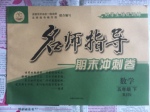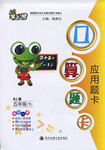题目内容
Once, there was a woman who had so many problems, so many worries, so many troubles… that at times she felt she had more troubles than anyone else in the world!
She was depressed. She thought she could never overcome her troubles, so she decided to end her life. That night she went to sleep early and she planned to commit suicide the next morning. But that night she had a dream…
She found herself in a large cave, surrounded by gray bundles (包袱) of all shapes and sizes. Walking toward her was a woman with flowing long white hair.
“Who are you?” asked the dreamer, “and what is this place?”
“This is the cave of bundles of troubles and I am the keeper of the cave.”
“Bundles of troubles?”
“Yes,” the keeper explained, “each person who walks on the earth carries a bundle of troubles on their left shoulder.” The dreamer turned to look and there was a gray bundle on her left shoulder—it had been there all the time and she never noticed!
“If you wish,” the keeper continued,” you can take your bundle down and exchange it for another.”
“Really?” The woman lowered the bundle from her left shoulder. Oh, it felt so good to put it down. Then she picked up a beautiful bundle.
The keeper said, “Why don’t you open it and look inside?”
So the woman opened it and looked inside. “But these are the same troubles I brought here!”
The keeper of the cave smiled softly and nodded. “That’s usually what happens, but do not despair, for there is another bundle on your right shoulder that should help lighten your load.”
The woman turned and saw another bundle on her right shoulder. It had been there all the time and she never noticed! The woman took it down and opened it. Inside were her talents, her gifts, her hopes and opportunities. The woman felt her heart filled with joy and she looked up to thank the keeper of the cave, but she was gone; all were gone. And she found herself sitting up in her own bed with the morning sun streaming through the window, shining on her face.
1.Why did the woman decide to end her life?
A. Because there were two gray bundles on her shoulders.
B. Because she always had bad dreams at night.
C. Because the keeper of the cave told her to do so.
D. Because she felt she had too many troubles to overcome.
2.According to the keeper of the cave, _____ .
A. there were good things such as talents in beautiful bundles
B. each person carries a bundle on each shoulder
C. different bundles contain different troubles
D. it is impossible for people to take their bundles down from their shoulders
3.What did the woman feel when she opened the bundle on her right shoulder?
A. Delighted. B. Moved. C. Depressed. D. Confused.
4.The story of the woman is to show that _____ .
A. dreaming a dream can save people’s life
B. the bundles on our shoulders can make us happy
C. attitude towards life plays an important role in people’s life
D. we must ignore the troubles in life
5.What do you think happened to the woman when she woke up?
A. She still felt depressed.
B. She committed suicide.
C. She looked for the keeper of the cave.
D. She didn’t want to end her life any more.
1.D
2.B
3.A
4.C
5.D
【解析】
试题分析:文章通过一个妇女因为不堪生活的重负决定结束自己的生命,但是在梦中她梦见一个充满抱负的山洞和洞主,洞主的一番话让她对人生有了不一样的看法。
1.
2.
3.
4.
5.
考点:考查故事类短文

 名师指导期末冲刺卷系列答案
名师指导期末冲刺卷系列答案 开心蛙口算题卡系列答案
开心蛙口算题卡系列答案